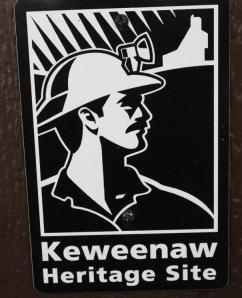While combing through newspapers trying to find tidbits on the strike I came across a Chicago Tribune article called “Mining the U.P.’s Photogenic Pictured Rocks.” Published in the October 13, 1985 edition of the paper, the article examines signage and tourism in the U.P. Although there is a heavy focus on the Pictured Rocks, including misconceptions as to what the tourist site is, the types of leisure Munising offers, etc, there is also a list of other “worthwhile” destinations in the U.P.
Copper Harbor is billed as a one-time mining town turned tourist trap, highlighting Fort Wilkins. Houghton is described as the site of the first great mineral strike and the copper bearing rocks are noted for their age. Tech’s mineral collections also receive a nod.
Seeing the general nature in which Copper Country destinations are described, even despite the buzzword use of mining in the article title, this article says little about the riches the area truly offers. Isn’t the essence of good tourism writing that of ample description? Of course you want to give straightforward information as to where, when, and how to visit things, but don’t you also want to entice your reader to visit those sites you mention? In my lifetime I have seen the signage in the Copper Country, Houghton and Keweenaw county especially, take a turn towards greater text, prominent roadside visibility, and increased interpretation. Tourist sites and roadside historical markers have increasingly been transformed into heritage sites in that they are not only something curious or interesting for tourists to look at but they are also striving to bestow some information or food for thought upon the viewing public. I wonder how the Tribune article would be presented if it were written today? Of course I would like to hope that there would be greater billing for the strike commemoration in the Copper Country, but it seems there could also be a greater focus on the meaning of heritage sites beyond describing them as historical novelties.





